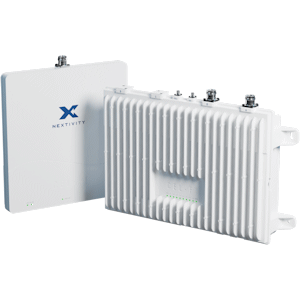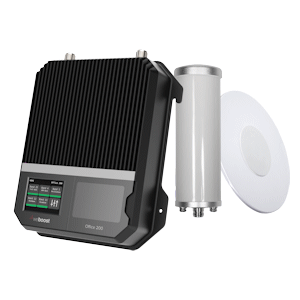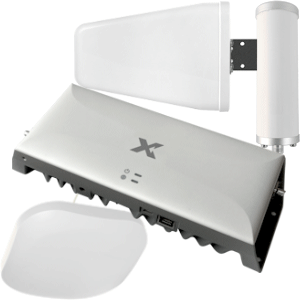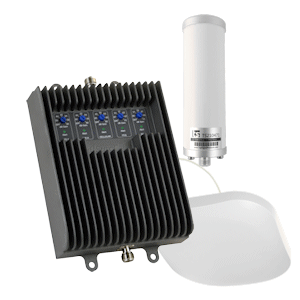Top 5 Large Home Cell Signal Boosters for 2024

Updated
Need better cellular reception in a home that’s 2,500 square feet or larger?
Consumer cell signal boosters for large homes have more gain (70 dB or greater) than boosters for small homes and greater uplink and downlink power for longer reach to distant towers and more coverage area indoors.
Powerful Signal has tested the large-home cell phone signal boosters from leading manufacturers. Here are our top five recommended systems, sorted by price:





Click any image to learn more about the product.
Notes
1 Measured in RSRP. Gain is the increase in the strength of the signal that the booster is able to produce. The higher the maximum gain, the stronger the signal the cellular phone will receive. Gain is measured in decibels (dB), which are logarithmic: An increase of 3 dB doubles the signal strength, an increase of 10 dB is ten times the signal strength, and an increase of 20 dB is one hundred times the signal strength. A booster’s maximum gain varies across the different cellular frequencies it supports; some frequencies will have a higher maximum gain; others, lower.
2 Uplink power is the amount of output power the booster uses to send data to a cell tower’s antenna; the more uplink power, the greater the range of the booster to towers. Uplink power is measured in decibel-milliwatts (dBm), which are a logarithmic measurement of milliwatts (mW): 20 dBm is 100 mW (one-tenth of a watt); 25 dBm is 316 mW (about one-third of a watt), over three times the power of 20 dBm. The figures in the table above are the booster’s average uplink power across all the cellular frequencies it supports and are drawn from test data submitted to the FCC.
3 Downlink power is the amount of output power the booster uses to send data to cell phones in its broadcast range; the more downlink power, the more indoor area the booster can cover. Downlink power is measured in decibel-milliwatts (dBm), which are a logarithmic measurement of milliwatts (mW): 10 dBm is 10 mW of power (one-one hundredth of a watt); 13 dBm is about 20 mW of power (one-fiftieth of a watt), twice that of 10 dBm. The figures in the table above are the booster’s average downlink power across all the cellular frequencies it supports and are drawn from test data submitted to the FCC.
4 Most cell phone signal boosters are carrier agnostic—they amplify signal for all major cellular carriers at the same time. CEL-FI QUATRA EVO and CEL-FI GO G41 boosters from Nextivity amplify one carrier. QUATRA EVO systems are designed for a specific carrier and cannot be changed; GO G41 boosters allow you to switch between Verizon, AT&T, T-Mobile, UScellular, and GCI Alaska.
5 Coverage figures are estimates under optimal conditions. Your coverage may vary.
6 Cell signal booster systems should use coax cables that match the booster’s impedance. 50-ohm boosters use 50-ohm coax (including ½‑inch plenum air, ½‑inch foam PE, 400‑type, 240‑type, 200‑type, 195‑type, and RG58); 75-ohm boosters use 75-ohm coax (including RG11 and RG6).
7 Powerful Signal offers a 90-day return on most products. (See our return policy.) The weBoost Office 300 Installed and weBoost Installed | Home Complete have a 30-day manufacturer’s return policy.

